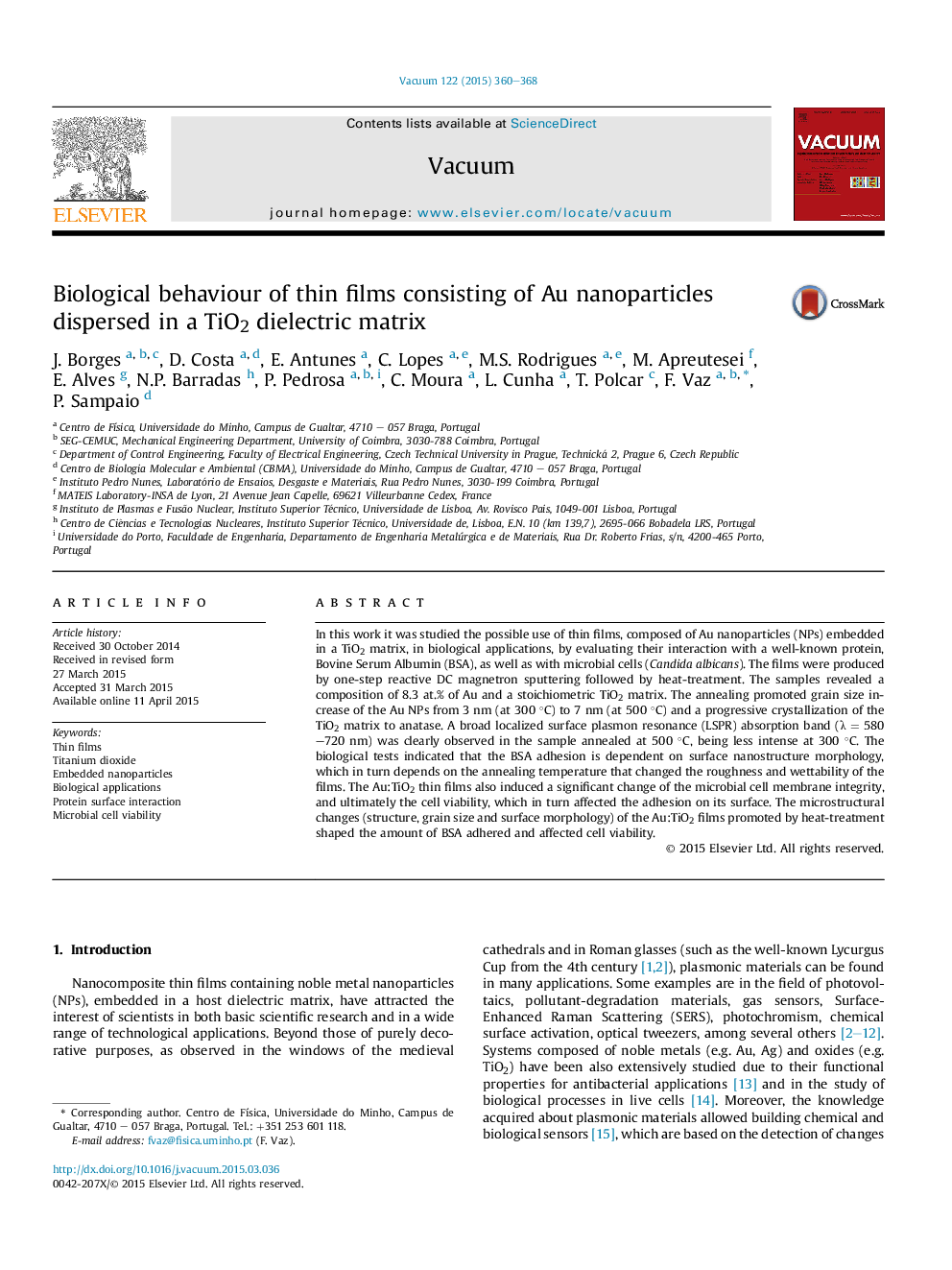| Article ID | Journal | Published Year | Pages | File Type |
|---|---|---|---|---|
| 1689821 | Vacuum | 2015 | 9 Pages |
•.Au:TiO2 films were produced by magnetron sputtering and post-deposition annealing.•.Annealing induced microstructural and optical changes (LSPR band) in the films.•.Surface morphology influences BSA adhesion and cell viability.•.Au:TiO2 films can be shaped for several biological application.
In this work it was studied the possible use of thin films, composed of Au nanoparticles (NPs) embedded in a TiO2 matrix, in biological applications, by evaluating their interaction with a well-known protein, Bovine Serum Albumin (BSA), as well as with microbial cells (Candida albicans). The films were produced by one-step reactive DC magnetron sputtering followed by heat-treatment. The samples revealed a composition of 8.3 at.% of Au and a stoichiometric TiO2 matrix. The annealing promoted grain size increase of the Au NPs from 3 nm (at 300 °C) to 7 nm (at 500 °C) and a progressive crystallization of the TiO2 matrix to anatase. A broad localized surface plasmon resonance (LSPR) absorption band (λ = 580–720 nm) was clearly observed in the sample annealed at 500 °C, being less intense at 300 °C. The biological tests indicated that the BSA adhesion is dependent on surface nanostructure morphology, which in turn depends on the annealing temperature that changed the roughness and wettability of the films. The Au:TiO2 thin films also induced a significant change of the microbial cell membrane integrity, and ultimately the cell viability, which in turn affected the adhesion on its surface. The microstructural changes (structure, grain size and surface morphology) of the Au:TiO2 films promoted by heat-treatment shaped the amount of BSA adhered and affected cell viability.
